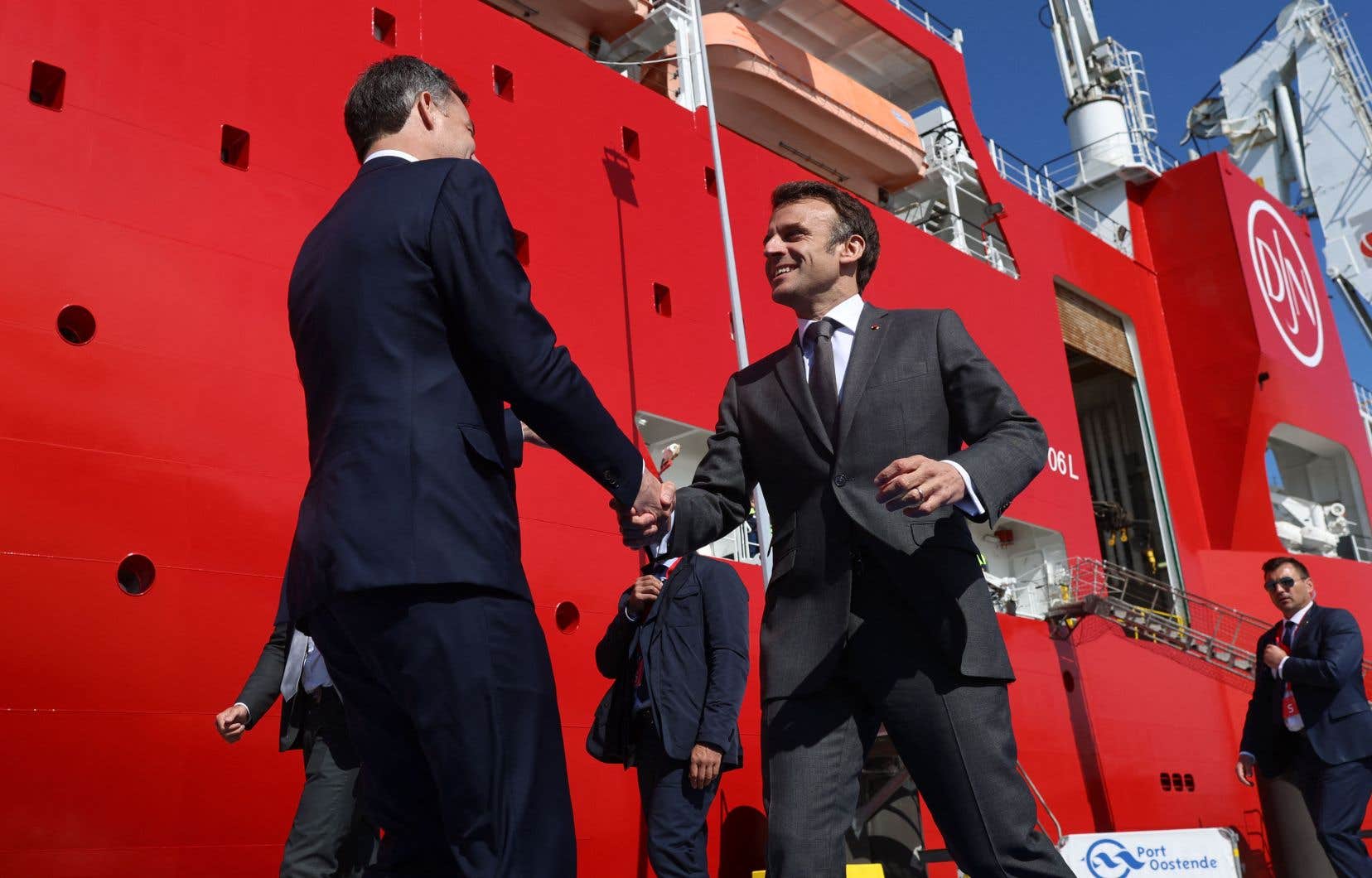Nine European countries met at a summit on Monday in Belgium to seal their common ambition to increase their wind turbine capacity tenfold in the North Sea, a colossal industrial challenge to accelerate the decarbonization of the continent.
“It’s a decisive day to make this North Sea the biggest green power station in the world”, insisted the Belgian Prime Minister Alexander De Croo, at the end of this summit in Ostend on the Flemish coast.
Seven countries of the European Union (France, Germany, the Netherlands, Belgium, Ireland, Denmark, Luxembourg) as well as Norway and the United Kingdom have committed to collectively increase their wind energy capacities in the North Sea to 120 gigawatts in 2030, then at least 300 GW in 2050, against current cumulative capacities of around 30 GW.
Wind farms, but also connection infrastructures, industrial chains, green hydrogen projects… Beyond the partnerships outlined in their final declaration, the nine signatory states want to coordinate their policies and calls for tenders, strengthen the production or simplify administrative procedures.
In the shallow North Sea, wind turbines can be installed in large numbers not too far from the coast, in wind conditions allowing the production of electricity at costs considered to be very competitive.
The objectives set are very ambitious: if the United Kingdom already has 14 GW of offshore wind power and Germany 8 GW, the capacities of Denmark, Belgium and the Netherlands are between 2 and 3 GW, and those in France and Norway only around 0.5.
In the statement, France is aiming for at least 2.1 GW by 2030, and “between 4.6 and 17 GW” by 2050 in the North Sea and the English Channel. Paris has previously announced that it is aiming for 40 GW of offshore wind power on all of France’s coasts by 2050.
To make this acceleration a reality, French President Emmanuel Macron called in Ostend to “secure the entire industrial sector”.
“We want a European industry to produce ‘wind turbines and infrastructure,’ and not replicate the mistakes we may have made” in the past by massively importing components and materials for the deployment of photovoltaics, he insisted.
Danish Prime Minister Mette Frederiksen called for “secure supplies” of critical materials (rare earths in particular) for which Europe remains highly dependent on imports, particularly from China.
Luxembourg, without a coastline, wants to contribute to the financing. “I bring money and I recover a little energy”, had fun its Prime Minister Xavier Bettel.
Colossal investments
After a first meeting of four countries in May 2022 in Denmark, this second “North Sea summit” is part of Europe’s climate objectives as well as the desire to drastically reduce its dependence on imported fossil fuels following of the war in Ukraine.
The EU recently agreed to double, to 42.5%, the share of renewables in its energy consumption by 2030, in particular by speeding up the authorization procedures for infrastructures. Brussels also offered regulatory relief for green industries in mid-March.
However, to achieve the Ostend objectives, “major new investments are needed in production capacity and supporting infrastructure […] The planned policies are insufficient for the moment”, reacted in a joint statement about a hundred companies.
“Europe has technological and industrial leadership, but does not produce enough of certain crucial elements (nacelles, blades, cables). A lot of funding is already going to innovation, the challenge is to invest in existing production structures, the capacity of which must be doubled, tripled, ”explained to AFP Pierre Tardieu, of the industrial federation WindEurope.
European industry should thus manufacture within five years the equivalent of 20 GW of offshore wind turbines per year, against a capacity of around 7 currently, at the risk of saturated factories and bottlenecks.
“The turbine manufacturers are currently operating at a loss, hard hit by the logistical disruptions following the Covid, we need punctual public support”, insists Mr. Tardieu, also noting the massive training and recruitment needs: offshore wind power will require 250 000 jobs in 2030, compared to 80,000 today.
The total cost promises to be colossal: at the end of 2020, Brussels estimated the investment needs at 800 billion euros if the EU aimed for 300 GW of offshore wind power by 2050.
Environmental NGOs call for them not to rush impact studies on marine biodiversity and WindEurope points the finger at the constraints linked to fishing and transport. “But to achieve these wind turbine objectives, we only need 7% to 10% of the maritime basin”, tempers Pierre Tardieu.
